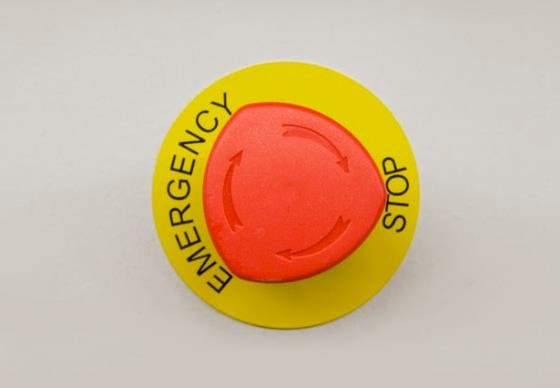An Emergency Button, often known as a panic button, is a device designed to generate a quick response or alarm during an emergency. It is typically found in high-risk areas such as bank counters, homes, hospitals, and schools. When pressed, it triggers an alarm system, alerting the relevant authorities or parties of the crisis. This button acts as a critical safety measure, ensuring immediate action is taken in various emergent conditions like a robbery, fire, or medical crises.
Having an emergency button is vital in ensuring safety and security. It provides immediate assistance during unforeseen situations, such as health crises, accidents, safety threats, or natural disasters. An emergency button can alert nearby individuals, security personnel, or health services, drastically reducing response time. This quick alert system can facilitate immediate action which can potentially save lives, prevent injuries, and provide immediate support. Therefore, the presence of an emergency button is indispensable in homes, workplaces, and public spaces.
Types of Emergency Buttons
The mobile emergency button is an essential and potentially life-saving feature available on most smartphones these days. It provides users with a quick and easy method to reach out to emergency services when in dire situations. With just a few taps or sometimes just by pressing a physical button, users can automatically call emergency numbers such as 911. Some phones also send out GPS coordinates to aid rescuers in locating the user. This button is particularly useful in situations where speed and promptness can make a significant difference, such as medical emergencies, fires, or criminal activities.
A wearable emergency button is a life-saving gadget designed for older adults, the disabled or anyone requiring immediate assistance. Its basic purpose is to send an emergency alert to a designated device or system when pressed. This personal safety device is usually worn as a necklace or bracelet for easy accessibility. It provides peace of mind to users and their families, knowing that critical help is just a button push away in case of falls, accidents or any health emergency.
Functions and Uses of Emergency Buttons
A tracking and notification system is a vital tool, designed to keep users updated about the progress of various operations. It captures and stores data in real-time related to specified tasks, processes, or items’ statuses. Users can receive automated alerts based on preset conditions, ensuring everyone stays informed and can respond promptly. This system can be utilized in various sectors such as logistics, project management, healthcare, etc., enhancing efficiency and transparency within an organization.
Emergency communication systems are paramount for prompt response during various crises such as medical, safety, or fire emergencies. This includes a broad spectrum of tools, from traditional methods like landlines and walkie-talkies to advanced technologies such as mobile apps and digital radios. These platforms provide swift coordination, accelerating rescue operations during critical times. The goal is to eliminate delays, potentially saving lives and mitigating further damages by efficiently coordinating dedicated emergency response teams.
Benefits of Emergency Buttons
Ensuring immediate response during emergencies is crucial for mitigating harm and safeguarding lives. This requires comprehensive planning, timely communication, and seamless coordination among different teams. Rapid response systems often involve trained professionals who are well-equipped to handle various emergencies such as medical emergencies, natural disasters or security threats. They use state-of-the-art technology and strategies to provide indispensable services when seconds matter, effectively reducing risk and providing urgent assistance to those in need.
Efficient problem-solving techniques are essential for successful conflict resolution. A platform that helps in speedier resolutions helps to alleviate tensions and resolve issues faster. Utilizing methods such as open communication, active listening, and negotiation can lead to a quicker resolution of conflicts. These techniques can be applied in various situations – from personal relationships to corporate disputes, speeding up the process of finding solutions and decreasing the time spent on disagreements.
Ensuring control in critical situations is an essential skill, especially in roles like management, emergency services, or healthcare. It involves maintaining calm, implementing immediate and effective decision-making and coordinating teams to execute a plan. This may also include crisis communication, prioritizing safety, and constantly assessing the situation for any changes. A strong leader not only maintains control but also helps others stay focused and composed, leading to successful navigation through crises.

Integration and Installation of Emergency Buttons
When integrating an emergency button into safety plans, several considerations are essential. First, the button’s location should be accessible, ensuring immediate help during emergencies. It must have a definite alarm system that notifies the relevant authorities promptly. The system should be easy to operate, even under stress. Regular testing and maintenance of the button are also necessary to confirm it’s functional at all times. Lastly, everybody in the building should be trained on its use and purpose for optimal efficiency.
Public spaces such as shopping centres, schools, parks, and others are integral parts of a community, providing areas for social interaction, shopping, learning, and recreational activities. Proper use of these places involves respecting facilities, maintaining cleanliness and observing guidelines for public safety. Especially in the current pandemic context, it’s crucial to follow health protocols such as social distancing and wearing masks. These sites function as shared resources, requiring everyone’s responsibility to keep them beneficial, safe and welcoming.
Workplaces worldwide utilize safety regulations to ensure a secure and hazard-free environment for their employees. These rules, set by authorities like the Occupational Safety and Health Administration (OSHA), provide a framework for identifying and addressing potential risks. They cover various areas, including proper use of equipment, adequate training, emergency preparedness, and regular safety audits. Adhering to safety regulations not only protects employees from injuries or accidents but also enhances productivity and fosters a positive workplace culture.
Customizing functions based on personal or professional needs allows for the optimization and efficiency of various tasks. Through customization, specific features or operations can be tailored to meet unique demands, improving productivity and ensuring greater user satisfaction. This process can involve software modification, unique algorithms for data processing, or adjusting settings in applications. Moreover, it fosters a sense of control and familiarity, enhancing performance and rendering tasks more manageable.
Conclusion
In the realm of safety and security, the emergency button stands as an indispensable tool, providing swift responses and crucial aid in times of crisis. Its presence in various environments, from homes to public spaces and workplaces, serves as a critical safety measure, ensuring immediate assistance during emergencies such as fires, medical crises, or threats.
The evolution of emergency buttons, from mobile applications to wearable gadgets, demonstrates their adaptability and life-saving potential. These devices enable quick communication with emergency services, significantly reducing response times during critical situations. They cater to different demographics, offering peace of mind to individuals requiring immediate assistance.
Functions like tracking systems and emergency communication platforms enhance efficiency and coordination in various sectors, facilitating rapid response and resolution during emergencies. They ensure real-time data sharing and prompt coordination among response teams, ultimately minimizing risks and damages.
















